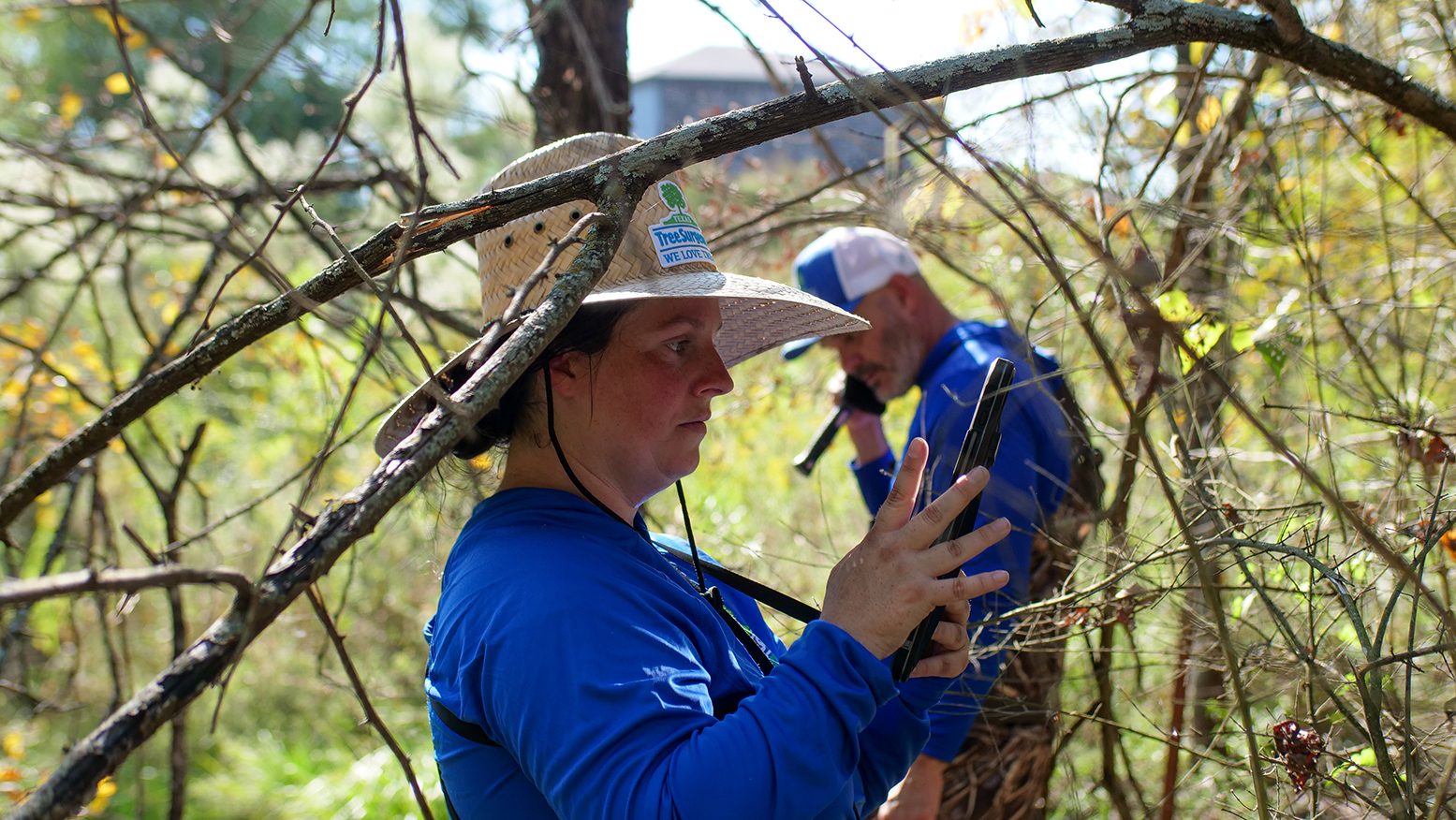Why Are My Oak Trees Turning Brown?

As the summer heat drags on, we start to get calls about trees “looking bad.” Recently, for example, we have been seeing general decline of trees, especially oak trees, in the Plano area. In a densely-populated suburban area like Plano, there are many potential causes for trees showing signs of stress, displaying yellowing or browning leaves, or dropping limbs. While some issues may be symptoms of a disease, much of the oak decline we are seeing is, unfortunately, an inevitable result of the environment the trees live in.
Plano, Texas’ Urban Forest
Plano, Texas, is a great example of a community that loves its trees and values the beauty an urban forest can bring. As the city has matured, so have its trees, and many of them are now magnificent. However, when the community was planned and the trees were planted, developers depended heavily on different species of oaks: live oaks, red (Shumard) oaks, post oaks, and others. While these oaks are hardy, native Texas trees, any environment that is heavily populated by one species is susceptible to certain risks. The proliferation of oak wilt in North Texas is exacerbated by the heavy concentration of oaks in the area. Even without an outside stressor like the oak wilt fungus, any monoculture will slowly start to decline as competition for resources affects all members of a species, without the diversity necessary to replenish what was used.
The causes of oak decline in Plano run deep into the soil and deep into the history of the community. Before Collin County developed into the elegant mix of residential, commercial, and industrial areas that it is today, most of the land was used for farming and ranching. Agricultural land becomes exhausted of its nutrients after long periods of use. Moving from heavy agricultural use directly into construction doesn’t give the land time to recover. Heavy construction activity also leads to soil compaction, and if mixed fill is used, precious soil space is taken up by rocks, cement, and other inorganic material. Decades of growth and the spread of structures and concrete have further challenged the ability of Plano soils to renew themselves. Changing weather patterns in the last several years, periods of drought followed by flooding, have stressed the soil and plants even more. As turf grass has proliferated, much of the natural process that would introduce nutrients to the soil through decaying organic matter has been interrupted.
What Can I Do About Oak Decline?
While oak decline is an inevitability for many Plano oaks, the situation is not completely hopeless; there is much that tree owners can do to help restore their trees’ vitality:
- Proper Mulching
- Proper Watering
- Reducing Competition
- Turf grass, ground cover, concrete, and over planting of trees can all contribute to nutrient competition.
However, there are some issues that may be beyond remedy:
- Poor Tree Stock
- If the tree was sourced from a tree farm with weak stock, or with trees that had been exposed to pathogens before, it may have been at a disadvantage from the start. A plant health care program may be able to ameliorate some issues, but not all.
- Improper Planting
- Planting issues can be corrected if the tree has not been in the ground more than a few years. The tree can possibly be re-planted, or root zone excavation can be performed to identify other root stability issues, such as girdling roots. A certified arborist can determine if any corrective efforts are possible for your particular tree.
Contacting a certified arborist to assess your trees is necessary to properly identify oak decline and address the underlying issues, not just the symptoms. Insect activity may need more involved care than just spraying a surface insecticide. Browning or yellowing leaves may be a sign of many issues: fungal root infection, insect activity, or herbicidal poisoning, and don’t simply mean that you need to water more. A certified arborist is able to evaluate the tree and its surroundings as a whole, not simply one component. An effective tree health care program involves many components: care modification, fertilization, soil management, proper trimming, pesticidal application. To preserve the value of an urban forest like Plano’s, certified arborists are key.
At Texas Tree Surgeons, we love trees, and we love our customers, in Plano and all over North Texas. If you live in Plano, and want more information about oak decline and what may be affecting your trees, let us know! If you’re not in Plano, don’t worry! We are happy to come and take a look at your trees to evaluate their health and give you the information necessary to keep them thriving for years. As always, let us know if you have any questions or concerns about trees!
Related Blogs
Similar blogs related to this topic


Top 10 Things We'd Tell You as an Arborist if We Weren't Afraid of Hurting Your Feelings
This is a list of tree care worst practices that you, or someone you know may be guilty of. Read the following list at your own risk. You’ve been warned, feelings may get hurt. 1.…
Read more

Avoid These Tree Care Mistakes for a Healthy Landscape
Below is a list of overlooked mistakes that could jeopardize the health of your trees. From missteps in pruning to incorrect watering practices, discover how to give your trees the care they deserve. Red oak…
Read more

Why do Arborists Recommend Soil Sampling in Urban Areas like Dallas?
Soil sampling is a crucial practice in urban areas like Dallas. It helps arborists make informed decisions about your landscape to ensure a healthy urban ecosystem. Our native soils vary widely—from the dense clays of…
Read more
